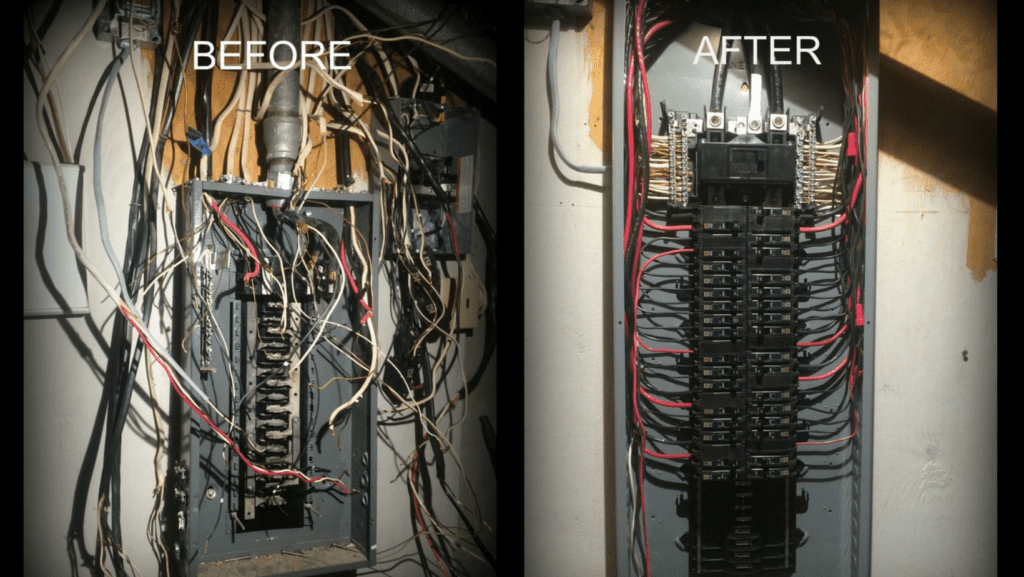At CWC Electric, LLC, our electricians take pride in the quality of their workmanship. The final make-up of an electrical panel tells you a lot about the person who performed the work. Is it neat, orderly and professional? Or is it sloppy, messy and looks unprofessional? Both may work so why does it matter? It’s simple, a well organized panel makes future troubleshooting and maintenance simpler and safer.
This electrical service had already been upgraded to a 200 amp service previously by the homeowner. Why did it require an additional upgrade?
The amperage of an electrical panel refers to the electrical capacity of a building, which is governed by the main breaker. Larger amperage increases electrical availability throughout the building. This particular home had enough amperage with a 200 amp panel but did not have enough circuit spaces within the panel.
Electrical panels vary in the number of circuits spaces contained in each panel. A specialty panel, such as used in a barn or other outbuilding, may only contain 12 circuit spaces. Most 200 amp panels used in modern homes contain anywhere from 20 to 60 spaces. The typical home panel contains 40 circuit spaces.
In the “before” picture of the electrical panel shown above, the 200 amp panel had 30 circuit spaces while the home had 46 seperate circuits. When there are not enough circuit breakers to accommodate each separate circuit, a homeowner may use tandem breakers, which are not unsafe.
When a panel becomes extremely crowded a homeowner may resort to a “double tap” where two circuits are landed under one breaker. In most instances a “double tap” does not conform to the National Electrical Code, is considered unsafe and will not pass a home inspection.
Under the National Electrical Code, there is actually a “box-fill formula” as to how many wires and circuits can be contained in a panel to regulate heat dispersion and to facilitate proper maintenance.
Has your panel kept up with the electrical needs of your home? If not, call CWC Electric, LLC at 785-215-8775 to discuss what may be needed to bring your home in line with modern day electrical demands.




